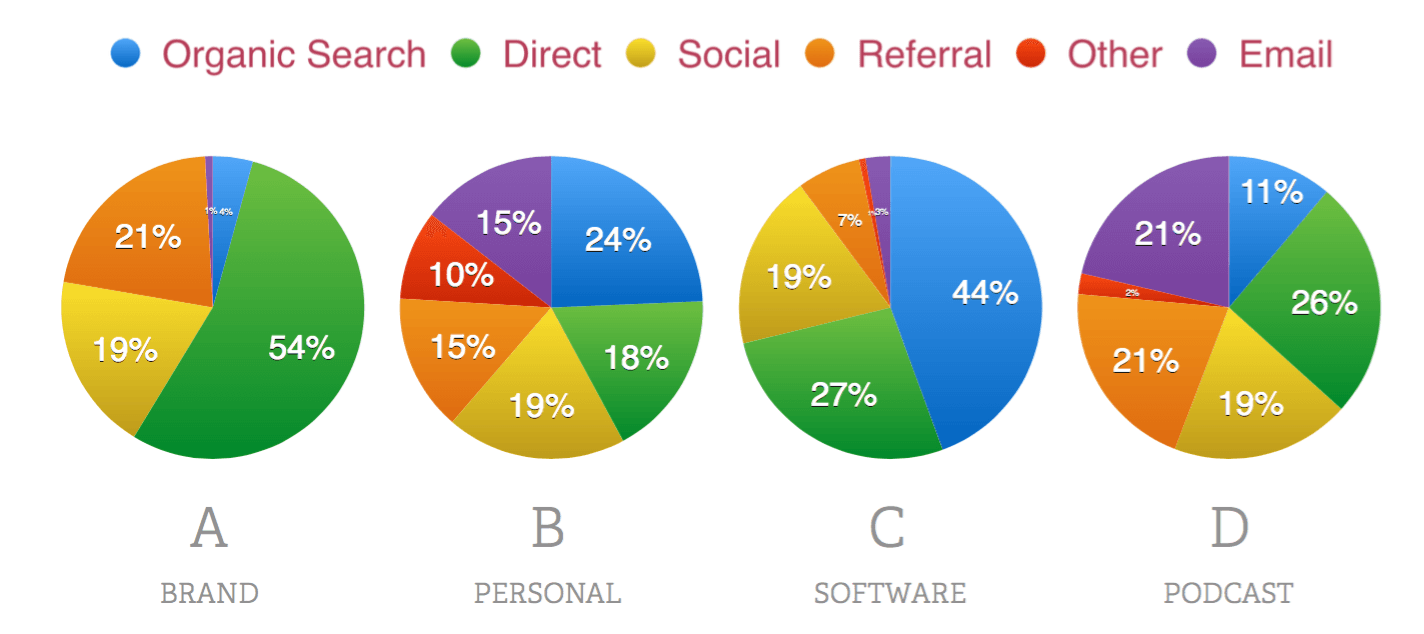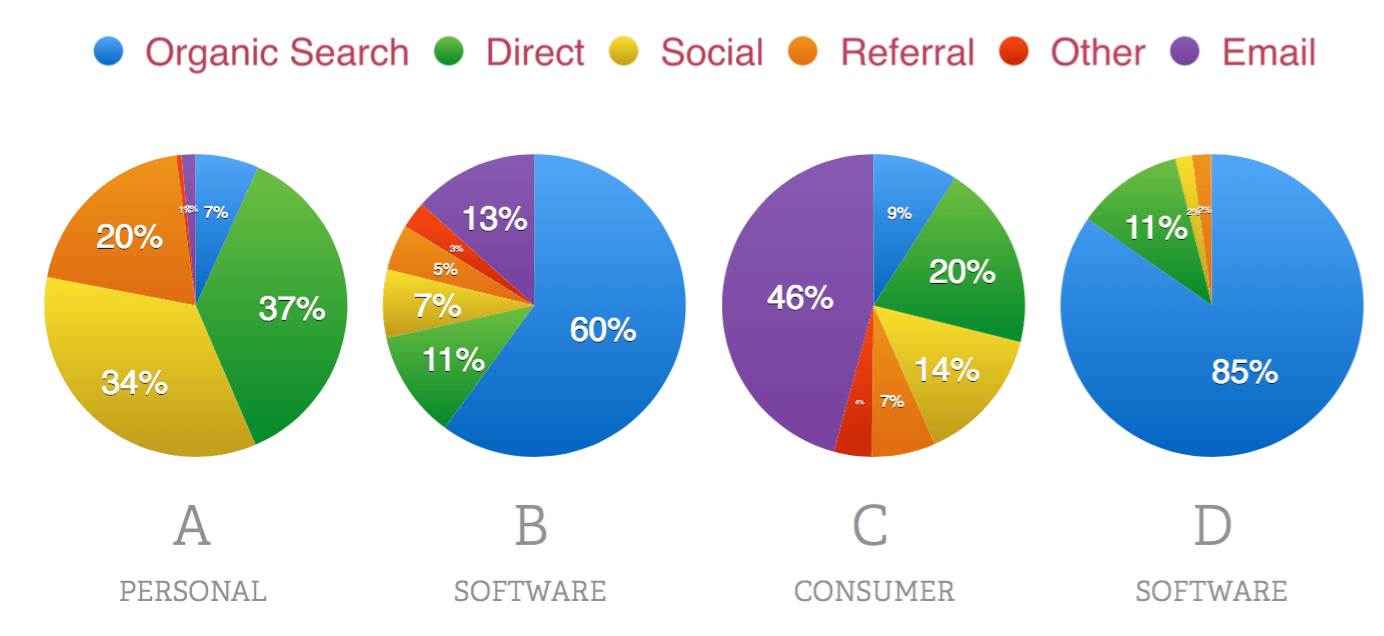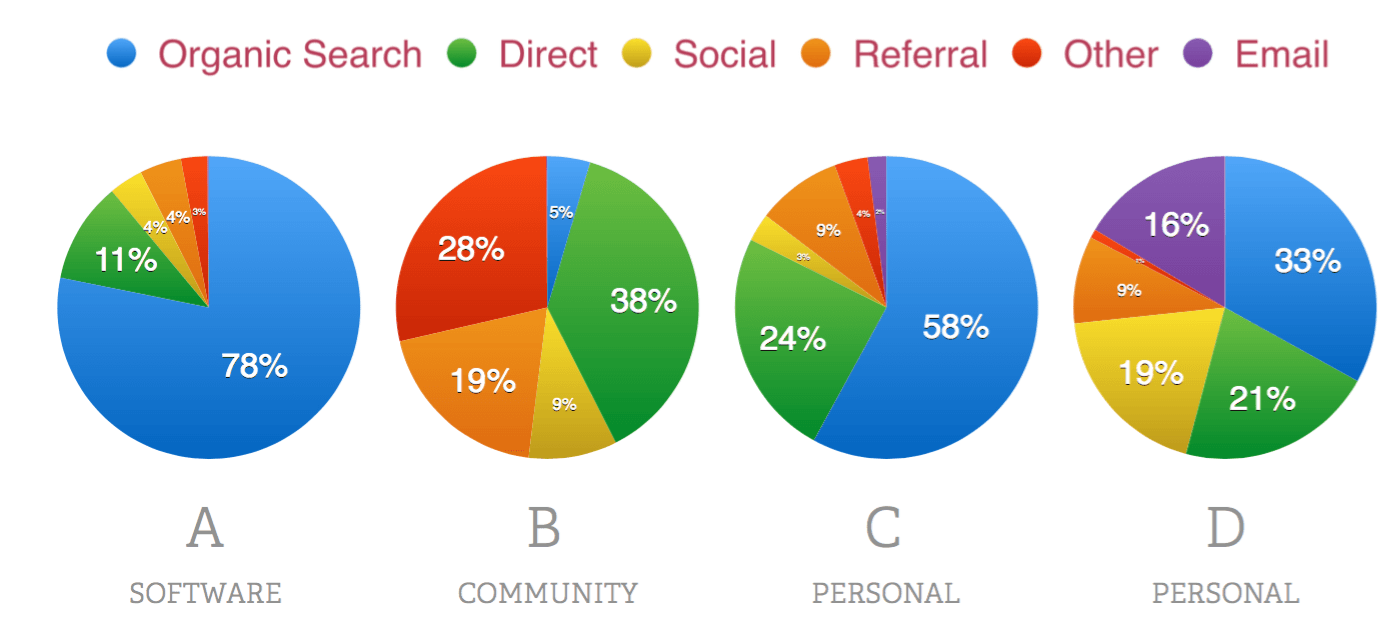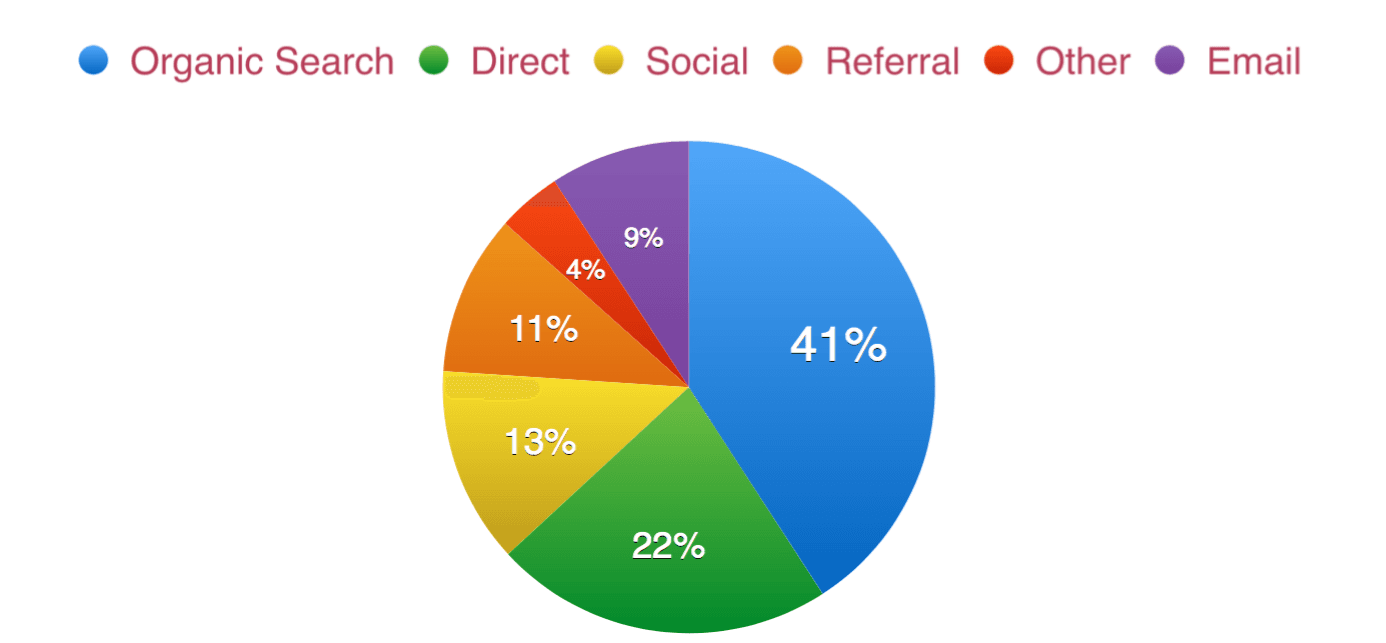Scaling Your Content Marketing Strategy from 0 to 15 Million Visits a Year
This article comes excerpted from Hiten Shah’s soon-to-be-released book: Content Marketing Playbook from 83,232,461 Website Visits.
This article comes excerpted from Hiten Shah’s book: Content Marketing Playbook from 83,232,461 Website Visits.
Over the past 10 years, Hiten has built and grown 8 different web-products, including Crazy Egg, KISSmetrics, and now Quick Sprout. Each of these companies used content marketing to drive the lion’s share of growth.
Sign up for Hiten’s SaaS Weekly newsletter to get a free copy of the book delivered straight to your inbox, along with fresh business insights every Monday morning.
Like good products, quality content keeps a company’s audience hooked and coming back for more. Content marketing allows you to build up retention for your product—before your audience has even tried it out. There’s no better way to nurture an audience of engaged, repeat visitors to your company.
The problem that most companies run into is that while they know how valuable content is, they have a much harder time turning that knowledge into growth strategy. The web is filled with content on why you should produce more content, but it’s far more difficult to get your hands on solid facts and data relevant to how your company can succeed through content.
Different companies have different compositions of traffic that are highly specific to the stage of growth they’re in. A software blog that receives under 150k visits in a year operates under a completely different rubric than one that scores millions. At each stage, you see different results—but patterns begin to emerge. I researched the traffic sources of 15 different blogs, ranging from well-known software products to community websites, and bucketed them according to traffic volume. This is my analysis.
1. Focus on Quality over Distribution Early On
Before you hit 150k unique visits a year, there tends to be a lot of variability between traffic sources. Content abides by the 80/20 power law, which means that 20% of your content typically drives 80% of the traffic volume. When your blog is just getting off the ground, and you’re working with a small sample size, it’s difficult to pin down which traffic sources are more productive than others. Companies at this stage should focus on nailing down content production, before trying to optimize distribution.
Traffic sources for blogs with less than 150k visits in 2015
Looking at four different blogs within this segment, we can see that:

- In the early days of your blog, think about SEO, but focus on producing high-quality content. Organic search was only a massive source of traffic for the software blog. There’s a tension between search and quality, and when people focus on SEO early on, quality tends to drop.
- A high percentage of direct traffic at this stage is a signal of quality. Though direct traffic could mean a number of different things, a high percentage this early signals that you’re doing a good job of spreading brand awareness. Visitors care enough about your content to bookmark your site and go directly to it.
2. Pick Your Channels
As traffic begins to grow you can start trying to build out other channels of distribution, like email or social media. The key is to focus on one thing at a time. If you’ve built your blog traffic around your personal brand, for example, chances are good that leveraging social media will prove equally effective. If you’re in the software bucket, start looking at how you can lever organic search for even more traffic.
Traffic sources for blogs with 150k-600k visits in 2015
At this stage, social traffic still accounts for a sizable chunk of traffic, while organic search begins to take off:

- By this stage, organic search is already the largest traffic source for both software blogs. Visitors use organic search to either search for branded keywords, like a company name, or for a solution to a problem. In comparison, the two others A and C both have relatively small SEO traffic, but it’s huge for both software blogs in this bucket.
- Consumers (and everyone else) love and rely on email. C has a massively high percentage of traffic through email—the largest, proportionally, across the board. It makes sense. Traditional consumer brands were the masters of mail-in advertising campaigns, and they apply the same strategies to email—offering massive discount markdowns in the subject lines.
- This bucket had the highest percentage of social traffic across the board. Before your content ranks high in a search engine’s index, social is a key channel for distribution. It allows you to leverage networks, and build up back links for SEO.
3. Turn on the growth engine
Hitting over 1.5m unique visitors is where you can start to get fancy and run control experiments to accelerate growth. 1.5m unique visitors a year breaks down to around 125,000 visits a month. Given a conversion rate of .25%, this means you get around 312 conversions a month each month from website traffic. You start to get the Top of the Funnel (ToFu) traffic you need to experiment and dramatically improve this number. It’s not a huge sample size, but it’s enough to start launching A/B tests and controlled experiments.
Traffic Sources For Blogs With 1.5m-3m visits in 2015

- In this bucket, organic search begins to take over as the top traffic source for all of the blogs, across types. The one outlier to this is B, the community blog. This makes perfect sense because the majority of content comes from visitors so there’s no organized keyword or content direction.
- Once you’ve built brand awareness and ToFu, direct traffic and social tend to diminish proportionally. B is again the outlier, but given that it’s direct and other traffic sources are so high, it’s also possible that they don’t properly sort through their traffic.
4. Nurture organic search
At the highest levels of traffic, organic search dominates and turns into the gift that keeps on giving. While there are more channels of distribution today than ever before, organic search still blows everything else out of the water.
Organic search remains the top source of traffic when it comes to content marketing—blogs are perfectly designed SEO fodder. The more content you have, the more organic search you’ll pull. On a base level, higher quantity just means there’s more stuff that gets indexed by Google.
Traffic Sources for Blogs With 8m-15m Visits in 2015

- At high volume, organic search dwarfs all other traffic sources. It strengthens ToFu and acquires new visitors like nothing else.
- As a channel, email needs to be actively nurtured and invested in at large scale. Email is a good channel because it nurtures high-quality, repeat visits—if you can get someone to roll in through search, and then have them return repeatedly, you nudge them further along your funnel.
- The personal blog gets a high percentage of email traffic. Other companies in this bucket don’t come anywhere close to this. What’s especially interesting here is that it shows you that you can carve out a niche on channels like email and social, if you make it a core part of your strategy.
Key Takeaways
Blended Breakdown of All Traffic Sources

- Organic search is massive, and the top traffic source for content marketing. At higher levels of traffic, it grows like crazy, and turns into the gift that keeps on giving. This is the biggest lesson to take away from all of the charts above.
- Direct traffic is the second highest traffic source. This is true for almost every blog regardless of traffic volume.
- Email isn’t as high in terms of sheer traffic volume generated. It’s important to keep in mind that quality of traffic matters too. Email is king because it nurtures high-quality repeat visitors—the best kind, that can be nudged through your funnel.
- Social is on the rise. In order to tap into social, however, you need to break it down further and look at how your brand can leverage specific networks.
Focus on the things that already work
No matter what stage your blog is at, the most important thing you can do to scale content is to focus on the things that already work. In the early stages, this means focusing on creating quality content and starting to build a loyal audience of repeat visitors. In the later stages, this means buckling down on the territories you’ve carved out for organic search, and creating more focused content around each of these areas.
When you someone tells you that Pinterest is the highest-converting social media channel for your market, or you read a blog post about the viral effects of hitting it big on Hacker News, resist the temptation to overextend your content strategy. These things might be true, but you can’t chase down trends just because they’ve worked for someone else.
In order to fully juice content for your business, you need to be as rigorous and analytical with marketing strategy as with building product, or boosting retention. Figure out what you’re doing right at each stage of growth, and expand from there.

Hiten Shah
Co-founder of Crazy Egg
Hiten Shah is co-founder of several SaaS businesses including, Quick Sprout, Crazy Egg & Draftsend.
More from Hiten




